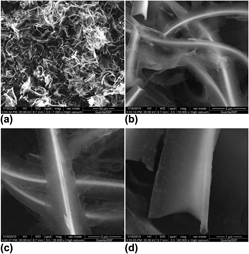Crossref Citations
This article has been cited by the following publications. This list is generated based on data provided by
Crossref.
Abbood, Hayder A.
Peng, Hong
Gao, Xianhui
Tan, Bien
and
Huang, Kaixun
2012.
Fabrication of cross-like NH4V4O10 nanobelt array controlled by CMC as soft template and photocatalytic activity of its calcinated product.
Chemical Engineering Journal,
Vol. 209,
Issue. ,
p.
245.
Atabaev, Timur Sh
Hwang, Yoon-Hwae
and
Kim, Hyung-Kook
2012.
Color-tunable properties of Eu3+- and Dy3+-codoped Y2O3 phosphor particles.
Nanoscale Research Letters,
Vol. 7,
Issue. 1,
Atabaev, Timur Sh.
Thi Vu, Hong Ha
Kim, Mac
Yang, Yong Suk
Kim, Hyung-Kook
and
Hwang, Yoon-Hwae
2014.
Effects of Li+ Codoping on the Optical Properties of SrAl2O4 Long Afterglow Ceramic Phosphors.
Advances in Optics,
Vol. 2014,
Issue. ,
p.
1.
Baig, N.
Dhoble, N. S.
Park, K.
Kokode, N. S.
and
Dhoble, S. J.
2015.
Enhanced luminescence and white light emission from Eu3+‐co‐doped K3Ca2(SO4)3Cl:Dy3+ phosphor with near visible ultraviolet excitation for white LEDs.
Luminescence,
Vol. 30,
Issue. 4,
p.
479.
Terraschke, Huayna
Suta, Markus
Adlung, Matthias
Mammadova, Samira
Musayeva, Nahida
Jabbarov, Rasim
Nazarov, Mihail
and
Wickleder, Claudia
2015.
SrAl2O4:Eu2+(,Dy3+) Nanosized Particles: Synthesis and Interpretation of Temperature-Dependent Optical Properties.
Journal of Spectroscopy,
Vol. 2015,
Issue. ,
p.
1.
Terraschke, Huayna
and
Wickleder, Claudia
2015.
UV, Blue, Green, Yellow, Red, and Small: Newest Developments on Eu2+-Doped Nanophosphors.
Chemical Reviews,
Vol. 115,
Issue. 20,
p.
11352.
Sanad, M. M. S.
and
Rashad, M. M.
2016.
Tuning the structural, optical, photoluminescence and dielectric properties of Eu2+-activated mixed strontium aluminate phosphors with different rare earth co-activators.
Journal of Materials Science: Materials in Electronics,
Vol. 27,
Issue. 9,
p.
9034.
He, Ling
Wu, Xueyan
Li, Wensheng
Wang, Shuncai
and
Li, Qiankun
2017.
Metal contact quenching mechanism of sintered SrAl2O4:Eu2+, Dy3+ composite coating.
Journal of Materials Science: Materials in Electronics,
Vol. 28,
Issue. 19,
p.
14483.
Sabalisck, N.P.
Lahoz, F.
González-Silgo, M.C.
Padilla, J.D.
Cerdeiras, E.
and
Mestres, L.
2017.
Control of the luminescent properties of Eu2-xDyx(WO4)3 solid solutions for scintillator applications.
Journal of Alloys and Compounds,
Vol. 726,
Issue. ,
p.
796.
Qin, Xian
Liu, Xiaowang
Huang, Wei
Bettinelli, Marco
and
Liu, Xiaogang
2017.
Lanthanide-Activated Phosphors Based on 4f-5d Optical Transitions: Theoretical and Experimental Aspects.
Chemical Reviews,
Vol. 117,
Issue. 5,
p.
4488.
Zhou, Jiajia
Leaño, Julius L.
Liu, Zhenyu
Jin, Dayong
Wong, Ka‐Leung
Liu, Ru‐Shi
and
Bünzli, Jean‐Claude G.
2018.
Impact of Lanthanide Nanomaterials on Photonic Devices and Smart Applications.
Small,
Vol. 14,
Issue. 40,
Manjunath, C.
Rudresha, M.S.
Walsh, B.M.
Hari Krishna, R.
Panigrahi, B.S.
and
Nagabhushana, B.M.
2018.
Optical absorption intensity analysis using Judd-Ofelt theory and photoluminescence investigation of orange-red Sr 2 SiO 4 : Sm 3+ nanopigments.
Dyes and Pigments,
Vol. 148,
Issue. ,
p.
118.
Zhang, Hao
Wei, Yang
Huang, Xiao
and
Huang, Wei
2019.
Recent development of elastico-mechanoluminescent phosphors.
Journal of Luminescence,
Vol. 207,
Issue. ,
p.
137.
Jamalaiah, B.C.
and
Jayasimhadri, M.
2019.
Tunable luminescence properties of SrAl2O4: Eu3+ phosphors for LED applications.
Journal of Molecular Structure,
Vol. 1178,
Issue. ,
p.
394.
Carlos, Emanuel
Martins, Rodrigo
Fortunato, Elvira
and
Branquinho, Rita
2020.
Solution Combustion Synthesis: Towards a Sustainable Approach for Metal Oxides.
Chemistry – A European Journal,
Vol. 26,
Issue. 42,
p.
9099.
Wei, Yurong
Gong, Chengxu
Zhao, Min
Zhang, Lei
Yang, Shaodan
Li, Peixu
Ding, Zhao
Yuan, Quan
and
Yang, Yanbing
2022.
Recent progress in synthesis of lanthanide-based persistent luminescence nanoparticles.
Journal of Rare Earths,
Vol. 40,
Issue. 9,
p.
1333.
Li, Panpan
Hua, Youjie
Ye, Renguang
Cai, Muzhi
Xu, Shiqing
and
Zhang, Junjie
2022.
SrAl2O4 crystallite embedded inorganic medium with super-long persistent luminescence, thermoluminescence, and photostimulable luminescence for smart optical information storage.
Photonics Research,
Vol. 10,
Issue. 2,
p.
381.
Verma, Akshkumar
Sahu, Dipti
Bisen, D. P.
Brahme, Nameeta
Barik, Priya
Sahu, I. P.
Kumari, Chandni
and
Gupta, Prerna
2024.
Achieving structural, photoluminescence, temperature dependent photoluminescence and thermo-luminescence properties of SrAl2O4:Dy3+Eu3+ phosphor for WLED application.
Emergent Materials,
Vol. 7,
Issue. 6,
p.
3029.
